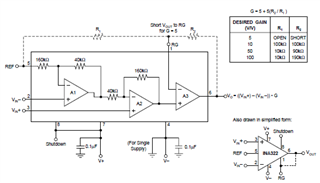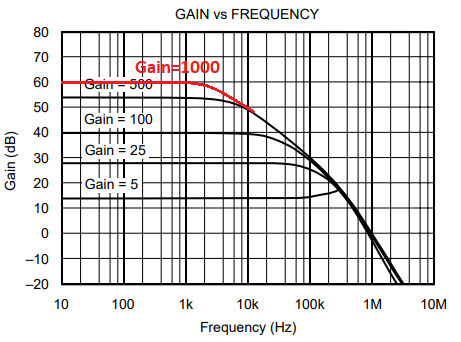Hey Amplifier team,
I have a customer evaluating the INA322 for a new project development and we are hoping you could help clear up a couple of things.
We expect to run the device at 1000x gain. Are there any considerations that should be taken into account when running at the max gain?
On page-9 of the INA322 datasheet there is this diagram:

There are no values shown for configuring 1000x gain. Is there a limit to how small the value of R1 can be? Must it be a minimum of 10k? Or could we lower it to say 2k? If it must be a minimum of 10k, then R2 would need to be 2M for 1000x gain, but if it’s OK to lower R1 to 2k, then R2 could be 402K, for example. If you can provide guidance about any limitations or requirements for the acceptable range of values for R1 & R2 that would be helpful, the datasheet does not seem to discuss this.
Best regards,
Matt Calvo



